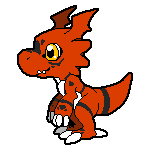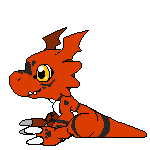I think I've just pinpointed the problem, but I'm still not sure what to do about it.
I've created various animated gifs using Photoshop and I wanted to display them in my java application. Using ImageIcon, some of them display as they should. Those are the ones with frames that have the same frame rate (such as each frame is 1 second long). However, the gifs that have varying frame rates (ex. one frame is 1 second, the other is .5 seconds, the next is .2) doesn't seem to be showing correctly. Once the gif reaches the frames that vary in seconds the image messes up. Some examples include the background briefly changing color and half of the image disappearing, or most of the image disappearing with the gif still animating.
I'm having a difficult time articulating, but do I need to use something else other than ImageIcon to correctly load the gif with varying frame rates? Like something with BufferedImage?
Edit: Added complete code below. Again, it works for the image with equal frame rates, but not for one with varying frame rates.
here is the image that works fine

and here is the image that messes up

import java.awt.*;
import javax.swing.ImageIcon;
import javax.swing.JComponent;
import javax.swing.JLabel;
import javax.swing.JPanel;
import javax.swing.JWindow;
public class Creature extends JWindow {
public void initCreature() {
JPanel contentPane = (JPanel) getContentPane();
ImageIcon idleImage = new ImageIcon(getClass().getResource("img.gif"));
// Set window properties
getRootPane().putClientProperty("Window.shadow", false);
setBackground(new Color(0,0,0,0));
setAlwaysOnTop(true);
contentPane.setOpaque(false);
// Get size of user's screen
GraphicsEnvironment ge = GraphicsEnvironment.getLocalGraphicsEnvironment();
GraphicsDevice defaultScreen = ge.getDefaultScreenDevice();
Rectangle screen = defaultScreen.getDefaultConfiguration().getBounds();
int taskbarheight = (int) (Toolkit.getDefaultToolkit().getScreenSize().height
- GraphicsEnvironment.getLocalGraphicsEnvironment().getMaximumWindowBounds().getHeight());
int x = (int) screen.getMaxX() - idleImage.getIconWidth();
int y = (int) screen.getMaxY() - idleImage.getIconHeight() - taskbarheight;
JLabel imageLabel = new JLabel(idleImage);
setSize(idleImage.getIconWidth(), idleImage.getIconHeight());
contentPane.add(imageLabel);
setLocation(x, y);
setVisible(true);
}
public static void main(String[] args) {
EventQueue.invokeLater(new Runnable() {
public void run() {
Creature cr = new Creature();
cr.initCreature();
}
});
}
}
JLabel). At a guess I'd say the problem is that PhotoShop is using an advanced encoding to ensure that only the parts of the frame that change, are updated. Note that although Java supports a particular file type like GIF, PNG or JPEG, does not mean it correctly understands every encoding type for each file type. A simpler image that, for every change, changes the entire frame should work better, but also be larger in bytes.